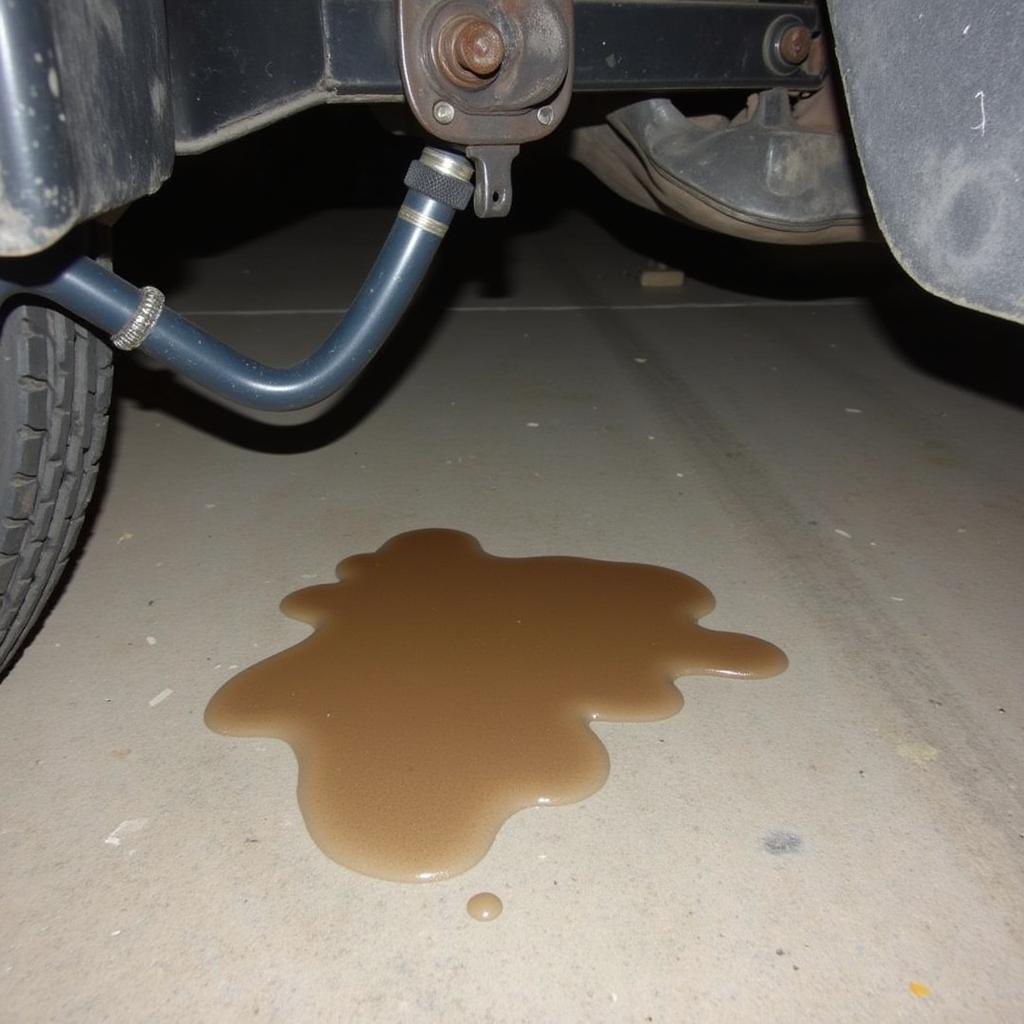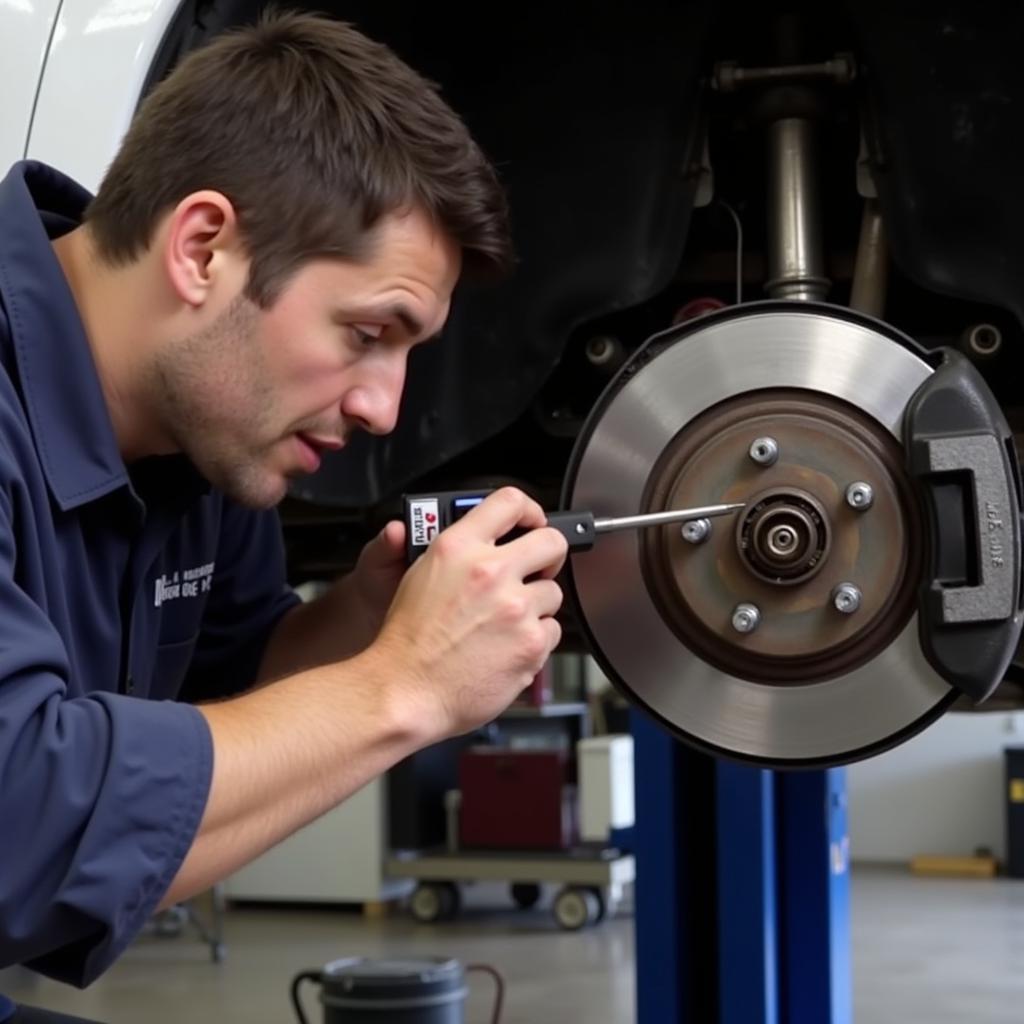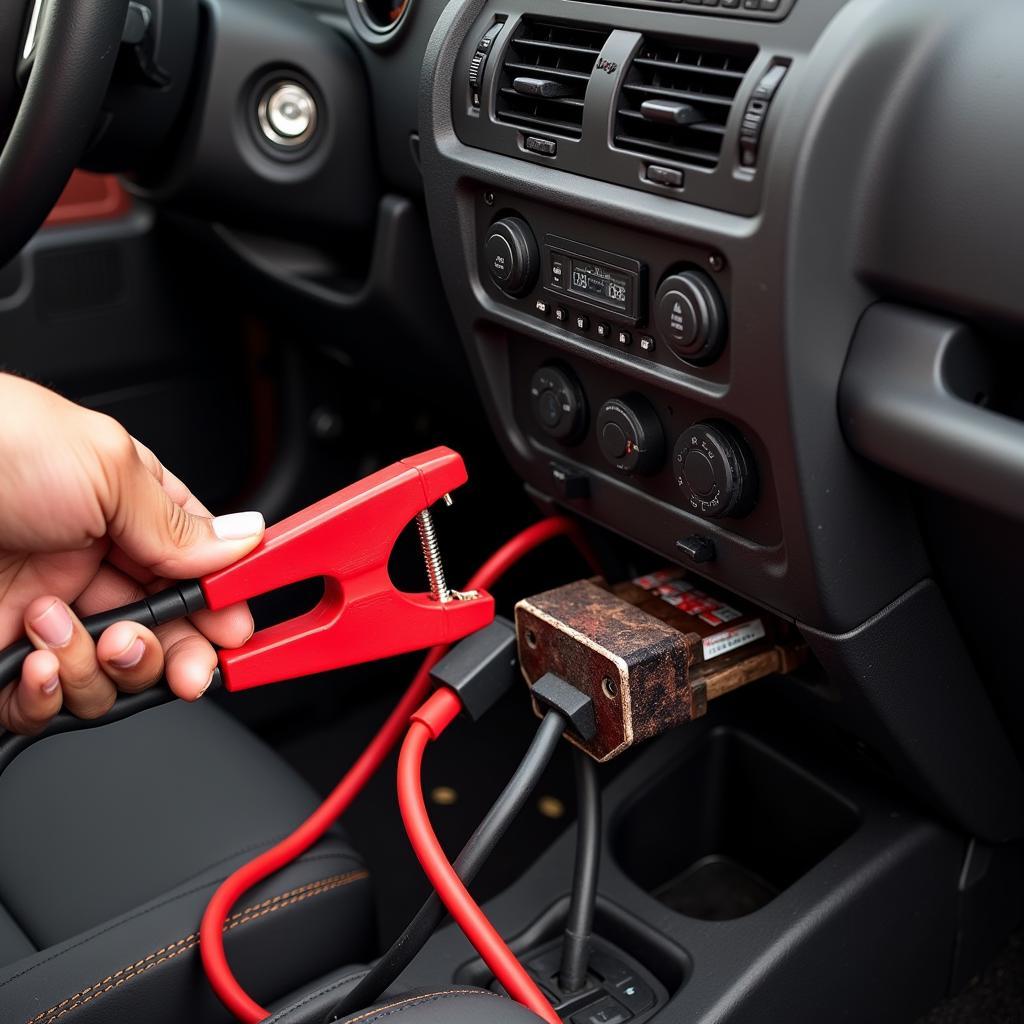The brake warning light on your dashboard is a crucial safety feature, especially in a powerful SUV like the 2002 GMC Yukon. When illuminated, it signals a potential issue with your braking system that requires immediate attention. Ignoring this warning could lead to reduced braking performance, increasing the risk of an accident. This comprehensive guide will delve into the common causes behind a 2002 GMC Yukon brake warning light and provide potential solutions to help you get back on the road safely.
Understanding Your GMC Yukon’s Brake Warning System
Before diving into the specifics, it’s important to understand how your Yukon’s brake warning system works. The system is designed to alert you of two primary concerns:
- Low Brake Fluid: Your Yukon utilizes hydraulic pressure to activate the brakes. When the brake fluid level drops below a safe threshold, the warning light illuminates to prevent a loss of braking power.
- Parking Brake Engaged: Leaving the parking brake partially or fully engaged can trigger the warning light. While this might seem obvious, it’s a common oversight that can be easily rectified.
Common Causes of a 2002 GMC Yukon Brake Warning Light
While a low brake fluid level or engaged parking brake are the most straightforward explanations, several other potential culprits could be triggering the warning light:
1. Worn Brake Pads
Brake pads are designed to wear down over time. As they wear thin, the brake caliper pistons extend further to maintain contact with the rotors. This increased piston travel can lead to a lower brake fluid level, triggering the warning light.
2. Brake Fluid Leak
A leak anywhere in the brake system, from the master cylinder to the brake lines and calipers, can cause a drop in brake fluid level and illuminate the warning light. Identifying the leak’s location is crucial for a proper repair.
 Brake Fluid Leak Underneath a 2002 GMC Yukon
Brake Fluid Leak Underneath a 2002 GMC Yukon
3. Faulty Brake Caliper
A sticking or seized brake caliper piston can prevent the brake pads from releasing fully from the rotor. This constant friction not only reduces braking performance but can also lead to a drop in brake fluid level and trigger the warning light.
4. ABS System Malfunction
While less common, a malfunctioning Anti-lock Braking System (ABS) can also trigger the brake warning light. The ABS system prevents wheel lockup during hard braking, and a fault in its sensors, control module, or pump can illuminate the warning light.
5. Faulty Brake Light Switch
Though seemingly unrelated, a faulty brake light switch can sometimes cause the brake warning light to illuminate. The switch signals the brake lights to activate when you press the pedal. A malfunctioning switch can disrupt this signal and potentially trigger the warning light.
Troubleshooting the Brake Warning Light
Addressing a brake warning light requires careful inspection and diagnosis. Here’s a step-by-step guide to help you troubleshoot the issue:
- Check the Parking Brake: Ensure the parking brake is fully disengaged. Sometimes a slight engagement can trigger the light.
- Inspect the Brake Fluid Level: Locate the brake fluid reservoir under the hood (consult your owner’s manual if unsure). Check the fluid level, ensuring it falls within the “Min” and “Max” markings. If the level is low, add the recommended brake fluid type specified in your manual.
- Inspect for Leaks: Carefully examine the area around the master cylinder, brake lines, and calipers for any signs of brake fluid leaks. Look for wet spots, drips, or puddles.
- Check the Brake Pads: If you’re comfortable doing so, inspect the thickness of your brake pads. Thin brake pads necessitate replacement and can contribute to a lower brake fluid level.
- Seek Professional Help: If you cannot identify the cause of the warning light or are uncomfortable performing the necessary repairs, it’s crucial to seek professional help from a qualified mechanic specializing in GMC vehicles.
 Mechanic Inspecting the Brakes of a 2002 GMC Yukon
Mechanic Inspecting the Brakes of a 2002 GMC Yukon
FAQs: 2002 GMC Yukon Brake Warning Light
Q1: Can I drive my Yukon with the brake warning light on?
A: It’s highly discouraged to drive with an illuminated brake warning light. Doing so could lead to reduced braking performance and increase the risk of an accident.
Q2: How often should I change my brake fluid?
A: It’s generally recommended to flush and replace your brake fluid every 2 years or 24,000 miles, whichever comes first.
Q3: How much does it cost to fix a brake fluid leak?
A: The cost of repairing a brake fluid leak can vary widely depending on the leak’s location and severity.
Q4: How long can I drive on worn brake pads?
A: Driving on worn brake pads is dangerous and can damage your rotors. It’s crucial to replace them as soon as they reach the minimum thickness specified by the manufacturer.
Q5: Do I need to replace all four brake pads at the same time?
A: While not always mandatory, it’s generally recommended to replace brake pads in axle pairs (both front or both rear) to maintain even braking performance.
Conclusion
The brake warning light on your 2002 GMC Yukon is a critical safety feature that should never be ignored. By understanding the common causes and following the troubleshooting steps outlined in this guide, you can address the issue promptly and ensure your Yukon’s braking system operates safely and efficiently. Remember, if in doubt, always seek professional assistance from a qualified mechanic.


